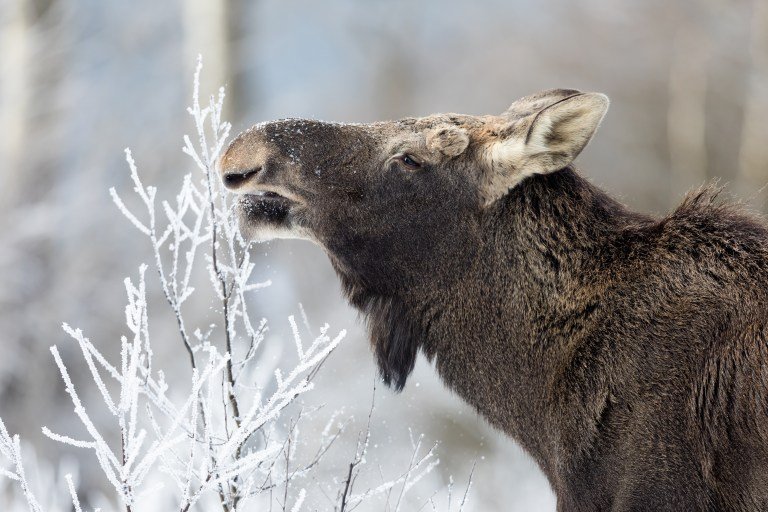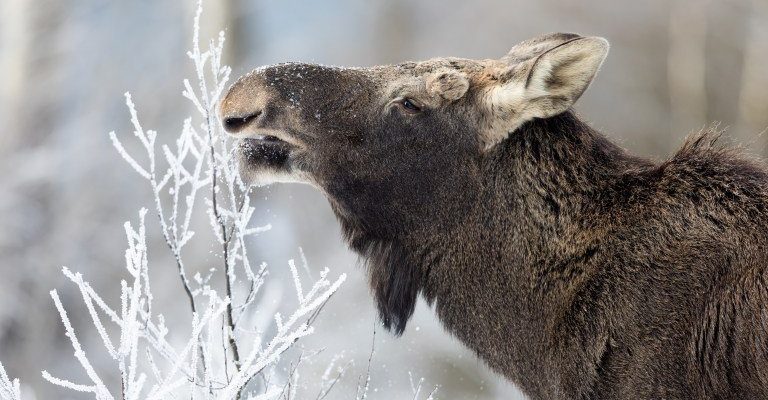
Imagine taking a leisurely hike in a serene forest, only to have a moose cross your path. It can feel like a magic moment. But here’s the thing—while moose are generally not aggressive, they can become dangerous, especially in certain situations. Let’s take a closer look at what makes moose potentially hazardous and how to avoid any unwanted encounters.
Understanding Moose Behavior
Moose are fascinating animals, and understanding their behavior is key to knowing whether they might pose a danger. These creatures are solitary and somewhat shy, often preferring to keep to themselves. However, they can be unpredictable, especially during specific times of the year.
Breeding Seasons: During the fall, male moose, or bulls, become more aggressive as they compete for mates. They might be on high alert and could view humans as threats to their territory. So if you happen to stumble across a bull moose during this time, it’s best to keep your distance.
Calving Season: In spring, female moose, or cows, may become protective of their calves. A mother moose can be particularly aggressive if she feels her young ones are in danger. If you spot a calf, it’s wise to back away slowly, as a protective mother won’t hesitate to charge if she thinks you pose a risk.
What Causes Moose to Charge?
Moose charge for several reasons, and understanding these can help you stay safe. Here are some common triggers:
- Provocation: If a moose feels threatened or cornered, it might charge in self-defense. This includes getting too close or trying to approach one.
- Protecting Calves: As mentioned earlier, a mother moose will aggressively defend her calf. If you see a calf, turn back—it’s just not worth the risk.
- Surprise Encounters: Moose are large animals, but they can be surprisingly stealthy. If you accidentally startle one, it may react instinctively by charging.
So, if you ever find yourself near a moose, it’s crucial to respect their space and approach slowly. A calm demeanor can go a long way.
How to Safely Observe Moose
If you’re excited about observing these majestic animals in their natural habitat, safety should always be your number one priority. Here are some tips on how to enjoy the experience without putting yourself in danger:
- Keep Your Distance: Always stay at least 50 yards away from moose. Use binoculars or a camera with a zoom lens to get a closer look.
- Stay Quiet: Noise can startle moose. If you spot one, keep your voice low and avoid sudden movements.
- Observe from a Safe Spot: If you see moose crossing a road, don’t rush to get closer. Find a safe spot to watch instead.
By respecting their space and observing them from afar, you can enjoy their beauty while staying safe.
What to Do If You Encounter a Moose
You might be wondering, “What should I do if I come face-to-face with a moose?” Here’s a straightforward guide to follow:
1. Stay Calm: Take a deep breath and don’t panic. Moose can sense fear, which may provoke an aggressive response.
2. Back Away Slowly: If you’re too close, back away quietly and slowly. Do not turn your back on the moose or run, as this may trigger a chase response.
3. Choose a Safe Spot: If the moose seems agitated or begins to approach, find a barrier like a tree or a car to put between you and the animal.
4. Wait It Out: Often, moose will move along if you give them space. Wait until they feel comfortable before continuing on your way.
Remember, keeping a respectful distance and remaining calm can help prevent a potentially dangerous situation.
The Impact of Moose on Communities
Moose aren’t just an interesting aspect of wildlife; they also play a significant role in local communities, especially in areas where they are prevalent. However, their presence can lead to some challenges:
– Traffic Hazards: Moose are large and can be hard to see, especially at night. Many accidents occur when drivers fail to spot them in time. Always be on alert when driving in moose territory.
– Property Damage: Moose can cause damage to gardens and landscaping as they forage for food. Communities often have to find ways to manage these interactions.
– Wildlife Tourism: On the bright side, moose can be a significant attraction for wildlife enthusiasts and tourists, bringing economic benefits to local towns. This can lead to community efforts focused on wildlife education and safe viewing practices.
Understanding these impacts helps communities find a balance between enjoying wildlife and keeping residents safe.
So, can the moose be dangerous to humans? The answer is yes, but it’s more about understanding their behavior and respecting their space. Moose are generally not aggressive creatures, but they can become dangerous if provoked, especially during the breeding and calving seasons.
By practicing safe observation and respecting their territory, you can enjoy these majestic animals without putting yourself at risk. Just remember that while they may look like gentle giants, a moose’s unpredictable nature makes it crucial to stay informed and cautious.
In the end, the key to a harmonious relationship between humans and moose comes down to mutual respect. Let’s appreciate these incredible animals while ensuring that both they and we can coexist safely in the great outdoors.

